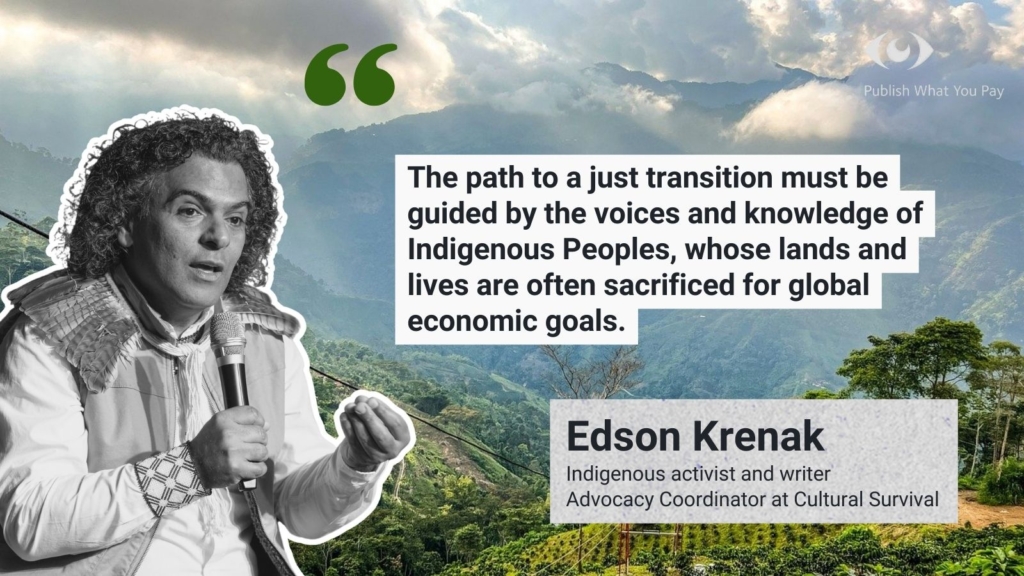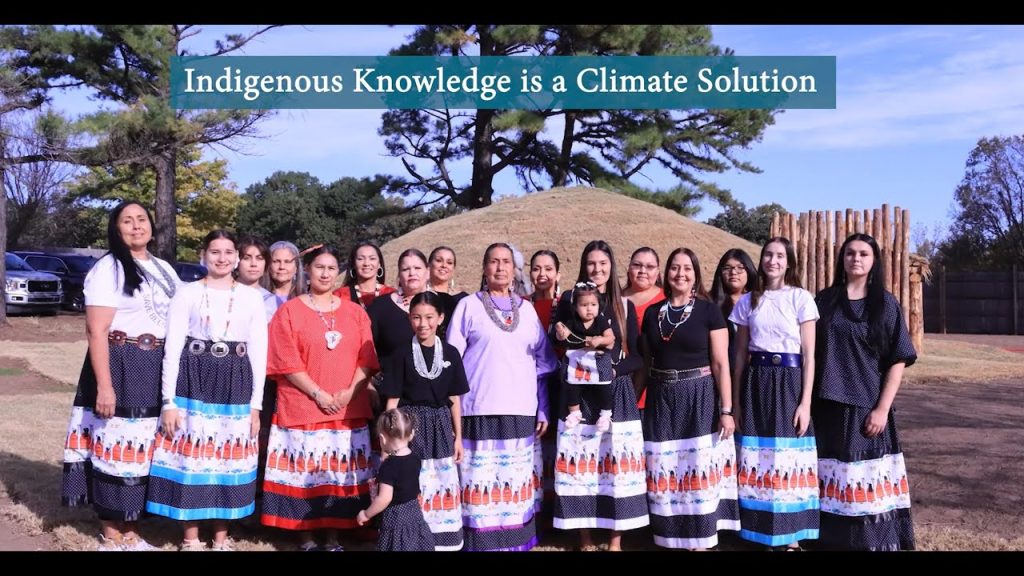Table of Contents
ToggleUnearthing the Roots: Defining Indigenous Climate Knowledge
What Exactly Is Indigenous Knowledge?
Imagine a library not built of paper and ink, but of experiences, observations, and practices passed down through countless generations. This is essentially what Indigenous Knowledge represents. It’s a rich tapestry of understanding about the environment, developed by Indigenous Peoples through their long and intimate relationship with the natural world. This knowledge isn’t just a collection of facts; it’s a living, breathing system that encompasses observations, both written and oral, innovative techniques, time-honored practices, and deeply held beliefs. Think about the incredible depth of understanding required to thrive in a specific environment for millennia. This knowledge touches upon everything from the intricate workings of local ecosystems to the subtle shifts in weather patterns, and it’s applied across a vast range of systems, including the biological, physical, social, cultural, and even spiritual aspects of life. It’s a holistic understanding that sees the world as interconnected.
This body of knowledge has been meticulously cultivated over thousands of years, constantly evolving as Indigenous communities interact with their surroundings. It’s built upon direct contact with the environment, long-term experiences, and the careful accumulation of observations, lessons, and skills that are shared from one generation to the next. You might also hear it referred to as Traditional Ecological Knowledge, or TEK for short, or even Native Science. These different terms all point to the profound and often scientifically rigorous understanding that Indigenous Peoples possess. The Intergovernmental Panel on Climate Change, or IPCC, defines it as the understandings, skills, and philosophies developed by societies with long histories of interaction with their natural surroundings. It’s the wisdom that comes from living in close connection with a place, observing its rhythms and changes over vast stretches of time. Interestingly, the Climate Atlas project highlights that Indigenous peoples were among the very first to notice the signs of our changing climate. Their deep connection to the land made them early sentinels, recognizing environmental shifts long before modern scientific tools were able to detect them. This early awareness underscores just how attuned they are to the delicate balance of nature.
Core Principles: Interconnection and Respect
One of the most striking aspects of Indigenous Knowledge is its emphasis on interconnectedness. It’s about seeing the world not as a collection of separate parts, but as a complex web where everything is related to everything else. This perspective fosters a deep sense of relationality and stewardship. Imagine a philosophy where all living things – plants, animals, water, even the land itself – are seen as interconnected and deserving of respect and care. This isn’t just a nice idea; it’s a fundamental principle that guides their interactions with the environment. Indigenous knowledge systems often offer a more holistic approach to understanding the world compared to some Western scientific models that tend to break things down into smaller, more isolated components. It’s about understanding the whole picture, not just individual pieces. This deep understanding of their surroundings and their ability to respond to climate variations has allowed Indigenous Peoples to thrive in incredibly diverse environments across the globe. Their success in adapting and flourishing in deserts, tundras, rainforests, and coastlines speaks volumes about the effectiveness of their knowledge and their respectful approach to the natural world.
How Indigenous Climate Knowledge Thrives: Transmission and Evolution
Knowledge Passed Down: The Power of Intergenerational Learning
How does this wealth of knowledge endure and continue to be applied? The answer lies in the powerful tradition of intergenerational learning. Indigenous Knowledge isn’t typically found in textbooks; instead, it’s woven into the fabric of daily life, passed down through stories, ceremonies, and direct instruction from elders to the younger generations. Think of it as a living inheritance, where each generation receives the wisdom of their ancestors. Traditional Ecological Knowledge, or TEK, is specifically noted as being handed down through generations. This method of transmission ensures that the accumulated observations, lessons, and skills are not lost but are continuously shared and built upon. This long-term perspective, stretching back centuries, provides an invaluable understanding of environmental changes and how to navigate them.
Adapting to Change: The Dynamic Nature of Indigenous Wisdom
It’s important to realize that Indigenous Knowledge isn’t a static set of ancient practices frozen in time. It’s a dynamic and ever-evolving system. Just like the environments they inhabit, this knowledge is flexible, fluid, and adaptive. It continuously develops through the ongoing relationship between Indigenous Peoples and their land. Think of it as a constant dialogue with nature, where observations lead to adaptations and refinements in their understanding. This knowledge is inherently responsive to the natural world, constantly adjusting to changes in weather patterns, animal behavior, and the health of the ecosystem. Traditional Ecological Knowledge itself is recognized as an evolving knowledge base, where new information and observations are constantly being added. There’s a fundamental understanding within these systems that the environment is not static but is always in flux. This inherent adaptability is what makes Indigenous Knowledge so incredibly relevant to addressing the rapidly changing climate we face today.
A Deep Connection: Rooted in Local Ecosystems
One of the defining characteristics of Indigenous Climate Knowledge is its deep connection to specific local ecosystems. Traditional Ecological Knowledge, for instance, is all about the intricate relationships between living beings within a particular environment. This knowledge is often highly context-specific. What an Indigenous community in the Arctic knows about ice and snow will be vastly different from the knowledge held by a community in the Amazon rainforest. Indigenous Peoples often have a profound and intimate connection to their land, water, and ecosystems. Through generations of observation and interaction, they have developed deep understandings of natural cycles, weather patterns, and the behavior of the plants and animals that share their environment. In many Indigenous cultures, plants and animals are not just resources; they are deeply integrated into their cosmogony, their spiritual beliefs, and their understanding of the world. This profound connection and detailed understanding of their local ecosystems make their knowledge an invaluable resource for addressing the impacts of climate change in those specific regions.
Putting Knowledge into Action: Key Domains of Application
Nourishing the Future: Sustainable Agriculture Practices
The wisdom embedded in Indigenous Knowledge isn’t just theoretical; it’s actively applied in numerous ways, particularly in addressing the challenges of a changing climate. In the realm of agriculture, Indigenous practices offer key strategies for local climate adaptation. These methods aren’t just about producing food; they’re about doing so in a way that conserves and even restores the land. Take, for example, the ingenious milpa system used by Indigenous communities in Guatemala and Mexico. This system utilizes intercropping, where diverse crops like corn, beans, and squash are grown together in the same plot. This isn’t just random planting; it’s a carefully orchestrated synergy where each plant benefits the others. The “Three Sisters” – corn, beans, and squash – is another prime example of this intercropping technique, widely used by Indigenous communities. The corn stalks provide support for the climbing beans, which in turn help the corn grow by adding nitrogen to the soil. Meanwhile, the squash vines spread across the ground, acting as a natural mulch that helps retain moisture and suppress weeds. This kind of system not only improves soil health but also helps manage pests naturally.
Indigenous seed keeping is another crucial practice, where communities carefully select, save, and adapt seed varieties to their specific regional growing conditions and the changing climate. This ensures they have crops that are resilient to local challenges. In some communities, even something as simple as splashing liquids made of cow urine is used as a traditional and effective plant protection measure against fungi. This natural pest control method is often readily available and environmentally friendly. In West Africa, Indigenous Peoples have developed sophisticated agroforestry systems over centuries, where crops and trees coexist. These systems help reduce soil erosion, improve soil fertility, and provide a more diverse and resilient agricultural landscape. Ultimately, Indigenous farming knowledge is deeply rooted in the specific natural features of their growing locations, taking into account rainfall patterns, soil fertility, and the types of crops and weeds prevalent in their area.
The Flow of Life: Indigenous Approaches to Water Management
Water is life, and Indigenous communities have long understood the importance of managing this precious resource sustainably. Their approaches to water management often rely on nature-based solutions, prioritizing the health and protection of entire ecosystems. Consider the role of beavers, which are sometimes called “ecosystem engineers.” Indigenous knowledge often recognizes the vital role beavers play in shaping the land and water by building dams, which in turn create wetlands, restore floodplains, and provide crucial wildlife habitat. Even ancient civilizations on the American continent, like the Maya and the Inca, developed incredibly advanced water management systems, including reservoirs, canals, and terraced fields designed to capture and store rainwater for agriculture while maintaining ecological balance. In the Peruvian Andes, Indigenous communities have developed intricate water harvesting systems, such as the construction of andenes (terraces) and canals, to capture and direct water from mountainous areas. They also practice careful mountain spring management, using techniques like reforestation and natural filtration systems to ensure water availability throughout the year. In Nepal, the tradition of dhunge dhara, or stone drinking fountains fed by underground sources, showcases an ancient and sustainable way of providing clean water. Similarly, in the semi-arid regions of Sudan, Indigenous communities have traditionally constructed hafirs, which are artificial catchment basins that collect and store rainwater for drinking during dry seasons. For many Indigenous Peoples, water is not just a resource; it’s considered a sacred entity, a living being that should be treated with respect and managed with a deep sense of responsibility.

Forest Guardians: Traditional Knowledge in Forestry
Forests hold immense cultural and ecological significance for many Indigenous communities, and their traditional knowledge plays a vital role in their sustainable management. For millennia, Indigenous stewardship has shaped forest landscapes, fostering diverse ecosystems with a balance of young, mature, and old growth. A key practice in many Indigenous cultures is cultural burning, also known as prescribed burning. This involves the controlled use of low-intensity fires to reduce the build-up of flammable materials, manage vegetation, and promote biodiversity. It’s a way of mimicking natural fire cycles to maintain the health and resilience of the forest. Unlike the Western forestry practice of often prioritizing overstory tree cover, Indigenous perspectives often emphasize sustaining the health and vitality of the forest understory, prairies, and meadows. This approach often involves maintaining open forests through frequent cultural burning. In fact, some of today’s most threatened forest ecosystems were actively sustained by these Indigenous stewardship practices. Notably, research has shown that Indigenous peoples’ lands in the Amazon rainforest act as incredibly effective carbon sinks, absorbing significantly more carbon than they release, and often have lower rates of deforestation compared to other areas. Increasingly, there’s a movement to “braid together” Indigenous Knowledge and Western science in forestry to develop more climate-smart and adaptive management strategies. This recognizes the immense value of Indigenous knowledge in fostering economic and ecological values such as clean water, fertile soil, food, material resources, and carbon sequestration through respectful and proactive stewardship.
Resilience in the Face of Disaster: Indigenous Disaster Risk Reduction
When it comes to facing the increasing threats of climate-related disasters, Indigenous Knowledge offers invaluable tools for preparedness and response. For generations, Indigenous communities have developed keen observational skills that allow them to predict and prepare for events like floods, droughts, and strong winds. In some communities, the behavior of animals, such as hippos relocating from rivers or pythons hissing in nearby forests, serves as an early warning sign of impending floods. Traditional architectural designs, like the elevated Chang ghars used by the Mishing community in Assam, India, are specifically adapted to withstand the impacts of annual floods, protecting homes and belongings. Traditional knowledge also plays a crucial role in weather forecasting, allowing communities to anticipate and mitigate potential risks. This knowledge isn’t just about prediction; it also informs how communities respond when disasters strike. Their deep understanding of their local environment allows them to develop effective coping mechanisms and survival strategies. The importance of integrating Indigenous Knowledge into disaster risk reduction efforts is increasingly being recognized by global frameworks like the Sendai Framework for Disaster Risk Reduction. This acknowledges the vital role that this knowledge plays in building community resilience.
Wisdom in Practice: Examples from Around the Globe
General Applications: Indigenous Communities Leading Climate Action
Across the world, Indigenous Peoples are actively applying their traditional knowledge to address the challenges of climate change. Many communities are returning to and strengthening their traditional food systems as a way to adapt to altered growing conditions and ensure food security while maintaining deep cultural connections to their ancestral lands. It’s a well-established fact that Indigenous Peoples are the custodians of a significant portion of the world’s remaining biodiversity. Their traditional land management practices are not only vital for preserving this biodiversity but also play a crucial role in climate action by protecting forests and carbon sinks. In a move towards a more sustainable future, many Indigenous communities are also taking the lead in developing community-owned renewable energy projects, harnessing the power of the sun and wind in ways that respect their land and values. Recognizing the urgency of the climate crisis, Indigenous peoples are also organizing across communities and geographies to create more sustainable futures for themselves and for the planet.
Specific Stories: Case Studies of Successful Implementation
There are countless inspiring examples of Indigenous Climate Knowledge in action. In Tanzania, Masai communities are using their ancestral knowledge of native plants to restore rangelands, helping to increase biodiversity, stabilize watersheds, and improve soil moisture. The Indigenous Maya in Central America have long practiced the milpa system, a sustainable agricultural model that promotes biodiversity and soil health. In Australia, Aboriginal Peoples have employed traditional fire management, known as cultural burning or cool burning, for generations to manage the landscape, reduce wildfire risks, and promote ecological balance. The youth-led Uru Uru Team in Bolivia is using their knowledge of native plants to develop floating rafts that help reduce pollution in the Uru Uru Lake, a vital resource for their culture and development. In the European Arctic, the Skolt Sámi have successfully restored rivers damaged by human activities, applying their deep understanding of the local ecosystem. The Mishing community in Assam, India, has relied on their traditional Chang ghar stilt houses for generations as a resilient adaptation to the region’s frequent flooding. And across four districts in Zimbabwe, researchers have documented how Indigenous knowledge is used for weather forecasting and implementing mitigation measures to reduce the impacts of both floods and droughts. These are just a few glimpses into the vast and effective ways Indigenous communities are using their traditional wisdom to navigate a changing climate.

The Global Stage: Recognizing and Discussing Indigenous Climate Knowledge
Current Conversations: Elevating Indigenous Perspectives
The importance of Indigenous Climate Knowledge is increasingly being recognized on the global stage. Indigenous Peoples themselves are actively participating in and shaping international climate change debates, advocating for their rights and the recognition of their invaluable knowledge. A significant step in this direction was the establishment of the Local Communities and Indigenous Peoples Platform, or LCIPP, under the United Nations Framework Convention on Climate Change (UNFCCC). This platform provides a crucial space for Indigenous voices to be heard and for their knowledge and practices to be integrated into national and international climate policies and programs. Even the Intergovernmental Panel on Climate Change, the leading international body for assessing climate change, is increasingly acknowledging the significant contributions of Indigenous Knowledge in understanding and responding to the climate crisis. Indigenous leaders from around the world are actively raising awareness about the critical need to bring their traditional perspectives into the very heart of climate policy development.
The Upsides: Benefits of Embracing Indigenous Knowledge
The benefits of recognizing and embracing Indigenous Climate Knowledge are numerous and far-reaching. This knowledge can significantly enhance our collective understanding of complex ecological threats and improve the effectiveness of our responses. It offers valuable insights for effective land management and can even aid in the prediction of natural disasters. Unlike the often compartmentalized approach of Western science, Indigenous Knowledge provides a more holistic perspective, seeing the interconnectedness of all things. It holds unique information about past environmental changes and potential solutions that have been tested and refined over generations. This wisdom is invaluable for developing robust adaptation and natural resource management strategies in response to environmental shifts. Furthermore, Indigenous practices often inherently promote sustainable resource use and foster the development of healthy and resilient ecosystems.
Important Considerations: Limitations and Challenges
While the value of Indigenous Climate Knowledge is undeniable, it’s also important to acknowledge that there are limitations and challenges to its sole reliance or seamless integration into mainstream climate solutions. Indigenous Peoples often face institutional barriers that can limit their capacity to implement their own adaptation strategies. The rapid pace of modern climate change can sometimes outpace the traditional mechanisms by which this knowledge evolves. There’s also a risk of knowledge loss as intergenerational transmission weakens due to societal shifts. Significant challenges exist in “mainstreaming” this knowledge into climate policy, often stemming from fundamental differences in what is considered valid knowledge in Western versus non-Western thought. Indigenous communities can also face communication injustices, limiting their public voice and influence on policy. It’s crucial to be aware that some climate mitigation strategies, if not carefully planned and implemented, can inadvertently have negative impacts on Indigenous territories and livelihoods. Additionally, while incredibly adaptable, Indigenous Knowledge may face limitations when dealing with climate changes that are entirely unprecedented in their history.
Bridging Worlds: Integrating Indigenous Knowledge with Modern Science
A Powerful Partnership: Towards Holistic and Sustainable Solutions
The most promising path forward likely lies in forging a powerful partnership between Indigenous Knowledge and modern science. Indigenous Knowledge can provide invaluable insights to inform land-based mitigation and adaptation efforts, offering a deep understanding of local contexts and ecological dynamics. While Western science often seeks to understand the world by simplifying and dividing its complexities, Indigenous Knowledge excels at embracing complexity and viewing all things in relation to one another. These seemingly different approaches can actually complement each other beautifully. By combining the detailed analytical tools of modern science with the holistic, long-term perspectives of Indigenous Knowledge, we can gain new and more profound insights into the challenges of climate change and develop more robust and sustainable solutions. The concept of “braiding” Indigenous Knowledge and Western Science is gaining traction, recognizing the strength in weaving together these two distinct but valuable ways of knowing to support climate adaptation and resilience. This integration is increasingly seen as necessary for achieving natural resource management that is not only sustainable but also equitable and responsive to local realities and needs.

Conclusion: Learning from the Earth’s First Stewards
As the world grapples with the accelerating impacts of climate change, the wisdom held within Indigenous Knowledge systems offers a vital pathway towards a more sustainable and resilient future. For millennia, Indigenous Peoples have lived in close harmony with their environments, developing a profound understanding of ecological balance and the intricate relationships that sustain life. Their traditional practices in agriculture, water management, forestry, and disaster risk reduction provide tangible and time-tested solutions that can complement and enhance modern scientific approaches. By recognizing, respecting, and actively integrating Indigenous Knowledge into climate action strategies, we not only honor the deep wisdom of the Earth’s first stewards but also unlock a wealth of innovative and culturally appropriate solutions that can benefit all of humanity in navigating the challenges ahead.
Frequently Asked Questions (FAQs)
Individuals can support by learning more about Indigenous cultures and their knowledge systems, advocating for policies that recognize their rights and knowledge, supporting Indigenous-led initiatives, and being mindful of the sources of information and products they consume, opting for those that respect Indigenous practices and territories.
FAQ 1: What is the difference between indigenous knowledge and local knowledge?
While both are place-based, indigenous knowledge often has a deeper historical and cultural context, is usually transmitted intergenerationally within a specific Indigenous group, and is often tied to their unique worldview and spiritual beliefs. Local knowledge, on the other hand, can be held by any long-term resident of an area, regardless of their cultural background.
FAQ 2: How can we ensure the ethical use of indigenous climate knowledge?
Ethical use requires obtaining Free, Prior, and Informed Consent (FPIC) from the knowledge holders. It also involves respecting their intellectual property rights, ensuring their full and equitable participation in any projects or initiatives that utilize their knowledge, and sharing any benefits that arise from its use.
FAQ 3: What role do international organizations play in recognizing this knowledge?
Organizations like the UN, through bodies like the UNFCCC and UNESCO, are increasingly recognizing the importance of indigenous knowledge in addressing climate change. They facilitate platforms for dialogue, promote the integration of this knowledge into policy, and support capacity-building initiatives for Indigenous communities.
FAQ 4: Can indigenous climate knowledge be applied in urban settings?
While often rooted in rural ecosystems, the core principles of indigenous knowledge, such as interconnectedness, respect for nature, and sustainable resource management, can certainly inform more sustainable practices in urban environments. This could include urban agriculture, water conservation, and the creation of green spaces that mimic natural ecosystems.
FAQ 5: How can individuals support the recognition and integration of indigenous climate knowledge?






